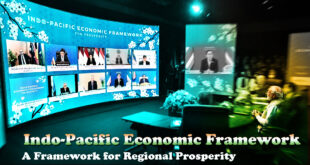Offsets have come under fire as a way for companies to compensate for carbon emissions through eco projects elsewhere.
How does offsetting work?
- Buying offsets is a way to compensate for environmental damage.
- Companies make a financial contribution to projects that reduce the amount of carbon dioxide in the atmosphere, and in exchange can keep polluting themselves.
Examples:
- Planting trees and rewetting peatlands — which store huge amounts of carbon in their soil.
- By this logic, it is possible to take “carbon neutral” flights with German airline Lufthansa.
- Even the FIFA World Cup in Qatar billed itself as climate-neutral.
Carbon offset industry:
- In recent years, the carbon offset industry has boomed.
- It is worth $2 billion (€1.87 billion) annually and is expected to grow five times that size by the end of the decade.
- Market where carbon credits are traded to meet government regulations — is much bigger, about $261 billion a year
Problems with offsetting
Phantom credits:
A study found that more than 90% of rainforest carbon offsets by Verra, the world’s biggest certifier, are likely to be “phantom credits”, meaning they do not represent genuine carbon reductions.
ESG risks:
One in five environmental, social and governance practices (ESG) risks are linked to carbon offsets and misleading communications.
Cost of credits is lower:
- The cost of credits — starting from $4.24 (€4) a ton — is often much less than the projected cost of reducing corporations’ own emissions in the first place.
- Lack of regulation means standards in the market are still hugely erratic.
Offsetting in practice
Offset projects can be broadly split into two categories:
Removals:
- Removal describes actions which actively take carbon out of the air and store it permanently, such as by planting trees or direct air capture — which is not a technology available at scale.
- Currently carbon dioxide removal represents just a small percentage of the carbon credits in circulation.
Avoidances:
Avoidance offsets are from projects that stop the release of greenhouse gases, such as protecting trees from being logged.
Conclusion
If the world’s 1,700 biggest emitters compensated each year for just 10% of the emissions they have not yet cut, through investments in nature, it would mitigate nearly 30 gigatons of emissions and mobilise up to $1 trillion in climate finance by 2030.
SOURCE: THE HINDU, THE ECONOMIC TIMES, PIB
 Chinmaya IAS Academy – Current Affairs Chinmaya IAS Academy – Current Affairs
Chinmaya IAS Academy – Current Affairs Chinmaya IAS Academy – Current Affairs



